2023 TESA Nominees
For over 26 years, The Environmental Stewardship Award (TESA) has recognized beef producers who explore innovative ways to protect, preserve, and enhance their operations and the environment simultaneously. These producers go above and beyond in their efforts to exemplify significant innovation and attention to a wide range of environmental aspects in their operations.
Meet this year’s regional recipients, who will compete at the national level and are invited to attend the Canadian Beef Industry Conference (CBIC). In August, during the CBIC, the most outstanding regional nominee will be recognized as the National Environmental Stewardship Award recipient. We’d like to thank our long-standing TESA judges from Ducks Unlimited Canada and Cows & Fish as well as past TESA recipients.
The Canadian Cattle Association (CCA) is proud of the significant amount of work being done by cattle producers across Canada to improve sustainability and environmental stewardship and commends the efforts of all TESA nominees.
Thank you to our Platinum Sponsor, MNP and Foundation Partners, Ducks Unlimited, Birds Canada, and the Canadian Roundtable for Sustainable Beef.

British Columbia – Crystal Lake Ranch
Werner and Jody Stump of Crystal Lake Ranch in Malakwa, British Columbia, have been nominated for The Environmental Stewardship Award by the B.C. Cattlemen’s Association. The Stump family is dedicated to sustainability, focusing on water quality, soil health, forage management, and wildlife habitat preservation. They employ silvopasture to optimize land use, effectively control brush growth, and create a harmonious environment for cattle and wildlife. Through various measures, including electric fences and riverbank stabilization, they minimize risks to livestock and protect water sources and riparian areas. Additionally, the ranch engages in diversified activities and utilizes drone technology for analysis and application of seeds and fertilizers.
To learn more about Crystal Lake Ranch click HERE.
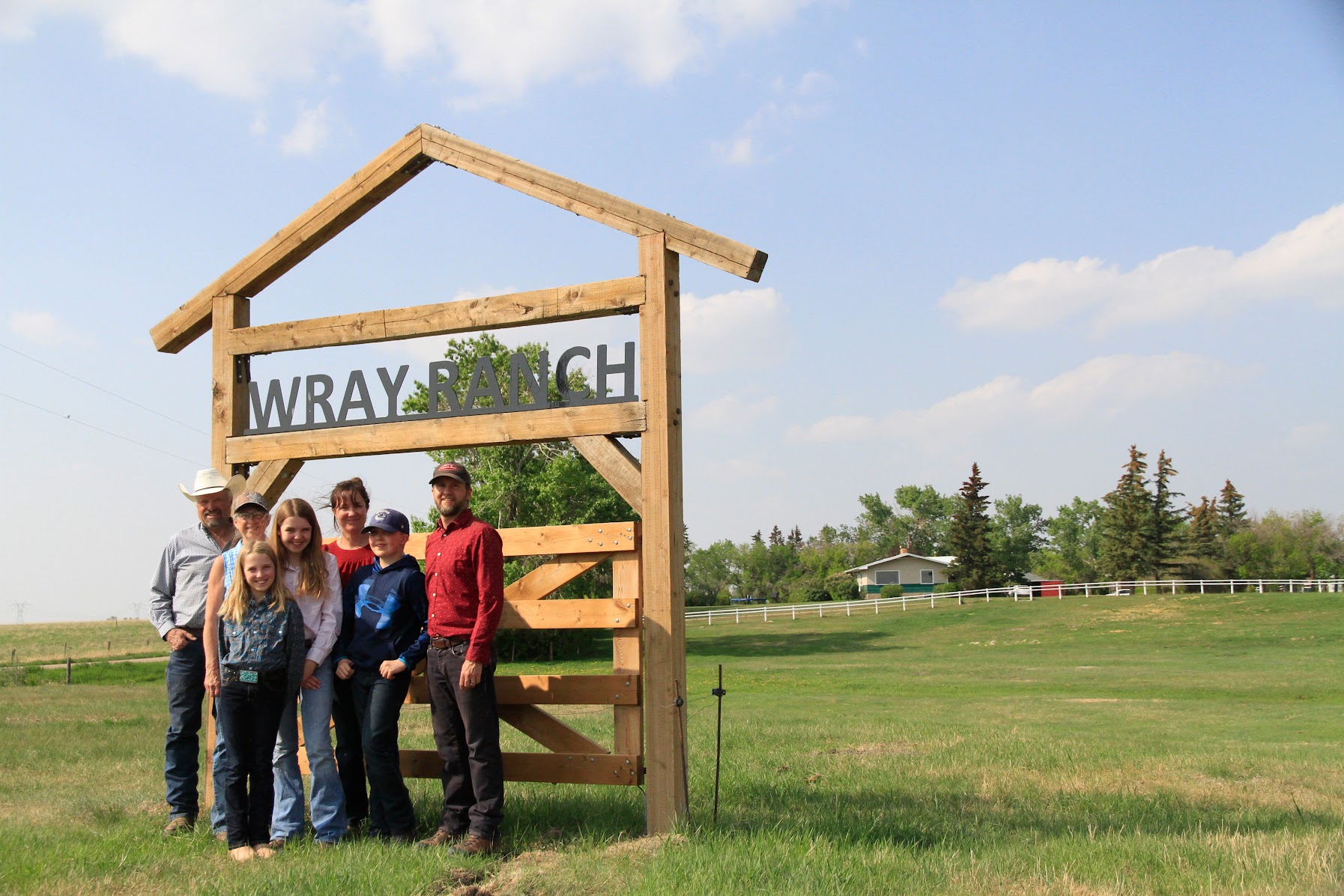
Alberta – Wray Ranch
The Alberta nominee is Wray Ranch of Irricana, operated by Doug and Linda Wray along with Nephew Tim and Joanne Wray. Since 1998, they have focused on sustainable practices, converting 1000 acres of cropland into high-legume perennial pasture divided into 20-acre paddocks. They practice year-round grazing, closely monitoring soil organic matter and other metrics. During drought, they reduce the herd and rent additional pasture while maintaining a chemical-free and wildlife-friendly environment. The Wrays prioritize soil health, achieving significant improvements in organic matter and combating erosion. They collaborate with experts and organizations, constantly seeking knowledge and sharing their experiences with the industry.
To learn more about Wray Ranch, click HERE.

Saskatchewan – Clear View Angus
Brian and Debbie Highsaw, Saskatchewan nominee to The Environmental Stewardship Award, own Clear View Angus at Mankota, Saskatchewan. Their ranch, located near Grasslands National Park, is home to endangered species, and they actively manage over 6000 acres of native grassland. Despite challenges like droughts, the Highsaw’s prioritize preserving Canada’s disappearing grasslands. They collaborate with organizations like the Saskatchewan Stock Growers Association and Grasslands National Park, to maintain biodiversity and ensure good land management. Their conservation efforts include rest periods for grazing, careful stocking rates, adaptive management strategies, and community collaboration. They are also involved in a conservation agreement to enhance habitat and species recovery.
To learn more about Clear View Angus, click HERE.
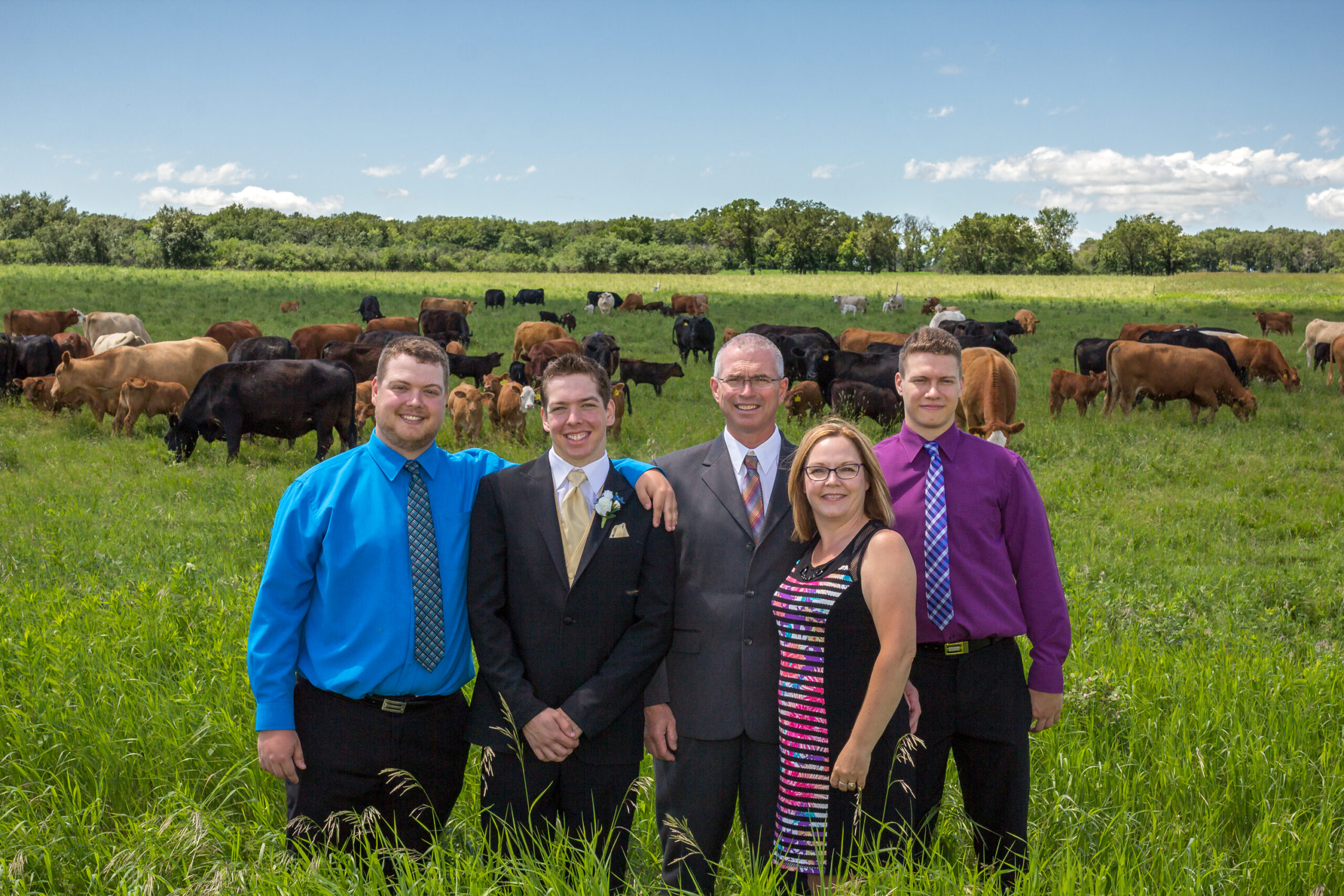
Manitoba – Lowry Farms
Glen and Pam Lowry, Manitoba nominee to The Environmental Stewardship Award, and their family operate Lowry Farms near Darlingford, MB in the Pemina Valley Region. They use a rigorous rotational grazing system and aim to improve soil fertility and increase forage production. The Lowrys are strategic about their cattle, feed, and wind break placement to ensure as much nutrients as possible are available to improve soil fertility They make use of numerous sustainable practices, are continuously learning, and eager to participate in research projects.
To learn more about Lowry Farms, click HERE.
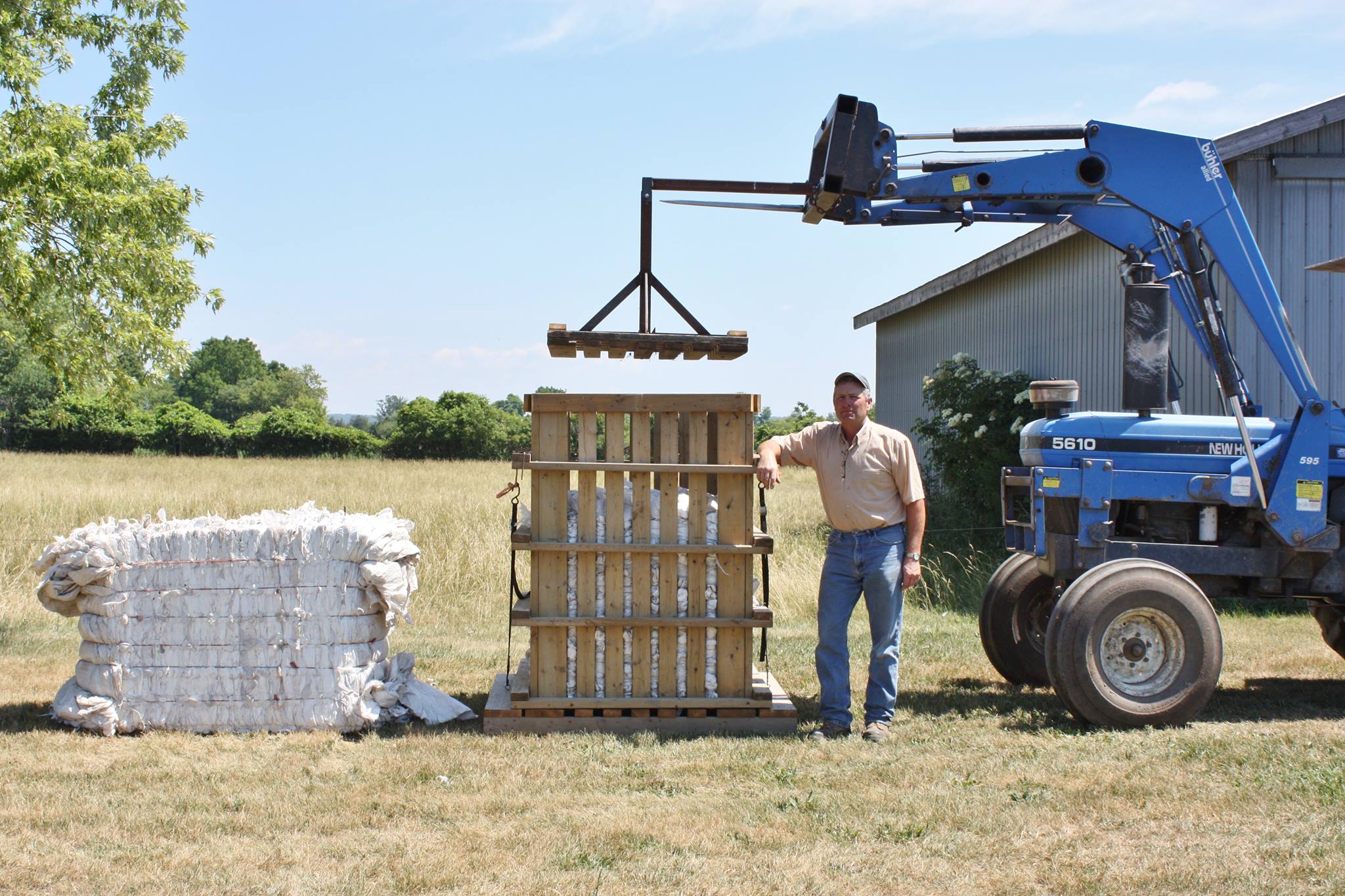
Ontario – Leavitt’s Black Angus Beef
Lynn Leavitt is the Beef Farmers of Ontario nominee to the Environmental Stewardship Award and owner of Leavitt’s Black Angus Beef in Prince Edward County, Ontario. His farm spans 200 owned acres and 300 rented acres, with 175 acres dedicated to grazing 100 cows. Leavitt recognized the need for a farm-level recycling system for plastics and in 2016, created the Pac-It compactor and U-Pac AgriServices. This innovative system allows farmers to collect and recycle farm plastics efficiently. By streamlining the collection process, Leavitt has successfully recycled 225,000 pounds of scrap agricultural plastic and the system has been adopted by over 200 farms.
To learn more about Lynn Leavitt, click HERE.
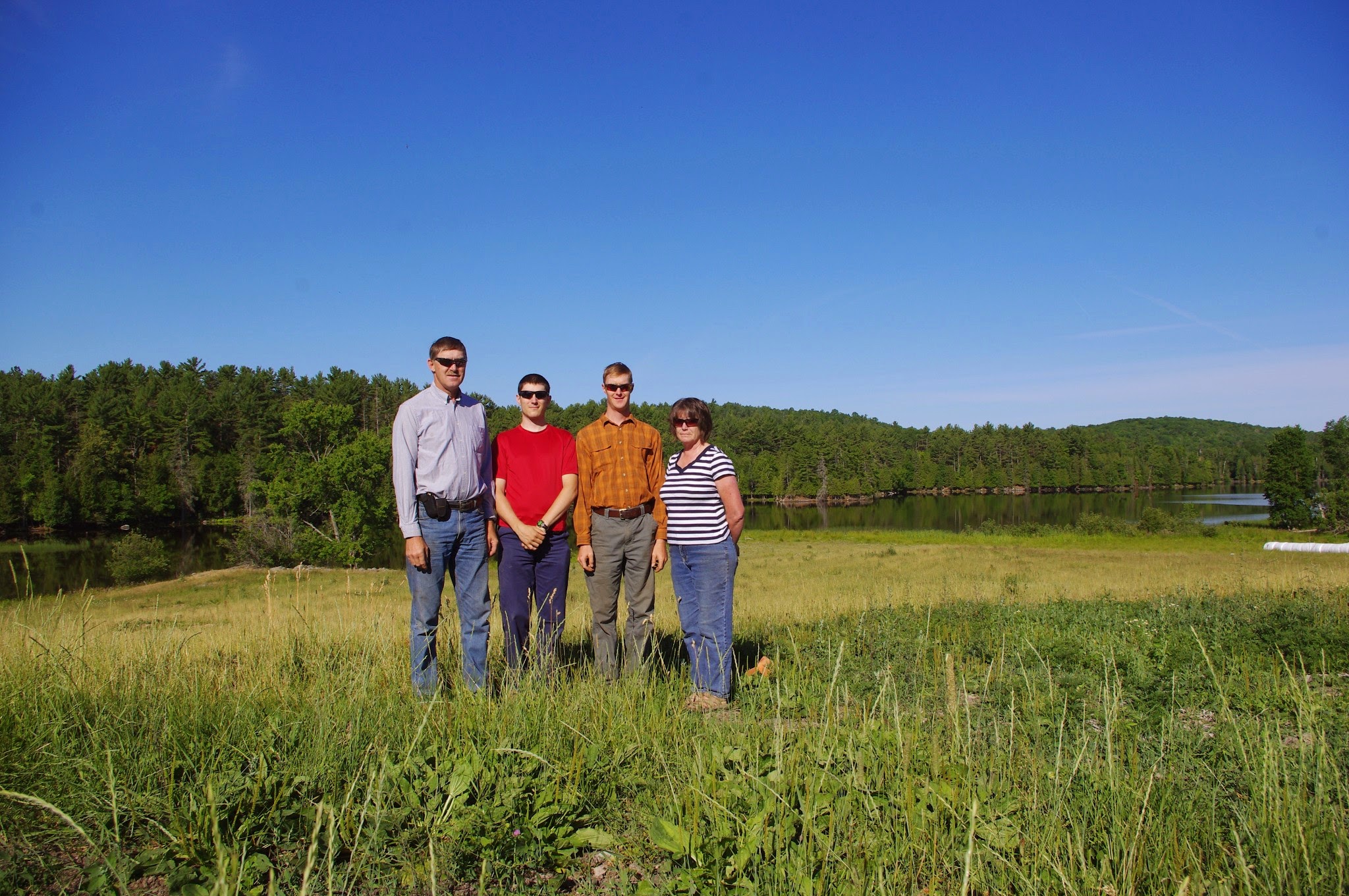
Quebec – Ferme Sage
Ferme Sage, owned by Stanley Christensen and Cheryl Sage, is the Quebec nominee for the Environmental Stewardship Award. The farm spans 86 hectares of owned land and 235 hectares of rented land, with 80% of it being forested. They raise 120 purebred red Angus cattle and sell bulls, heifers, and beef locally. The farm follows sustainable practices, such as maintaining perennial grassland crops, using manure for fertilization, and participating in farm plastic recycling. They prioritize wetland stewardship, utilize solar-powered watering systems, and protect sensitive areas. Ferme Sage has a long history of grazing cattle and implemented a conservation plan to promote biodiversity.
To learn more about Ferme Sage, click HERE.
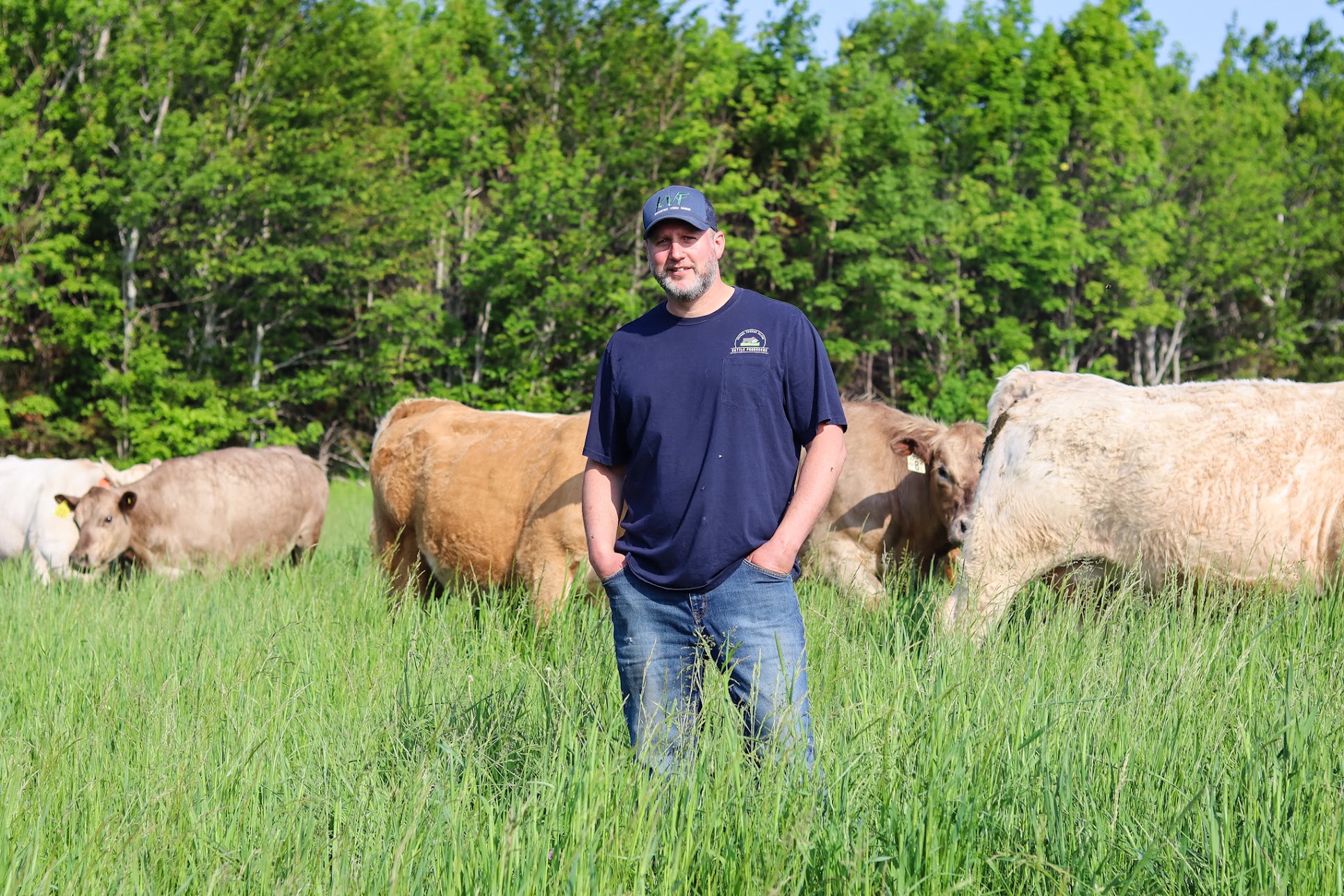
Prince Edward Island – Kingston View Farms
Nick Green of Kingston View Farms in Prince Edward Island is the Maritime Beef Council nominee for The Environmental Stewardship Award. He returned to beef cattle farming in 2015 and has since made significant changes to improve efficiency and sustainability. His goals include reducing fertilizer and chemical costs, diesel consumption, and shortening the winter-feeding period. In 2019, he implemented a year-round intensively managed rotational grazing system reducing the need for tillage and fertilizers. Calving time includes a variation of the Nebraska Sandhills System. In May, cattle start on grass, moving every day or two. In the fall, cattle graze corn, later moving to stockpiled forage and bale grazing. Green also partners with potato growers for grazing on their farms.
To learn more about Kingston View Farm, click HERE.